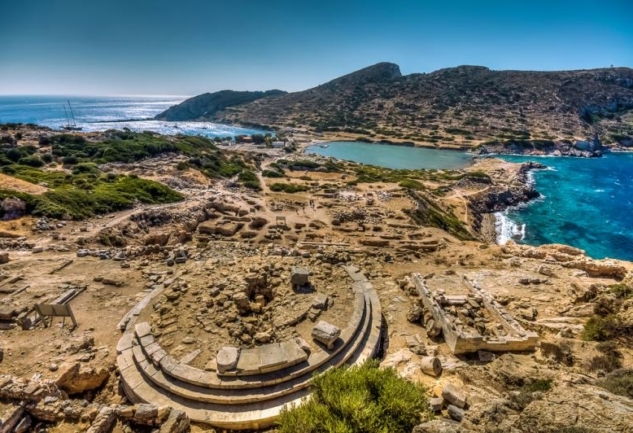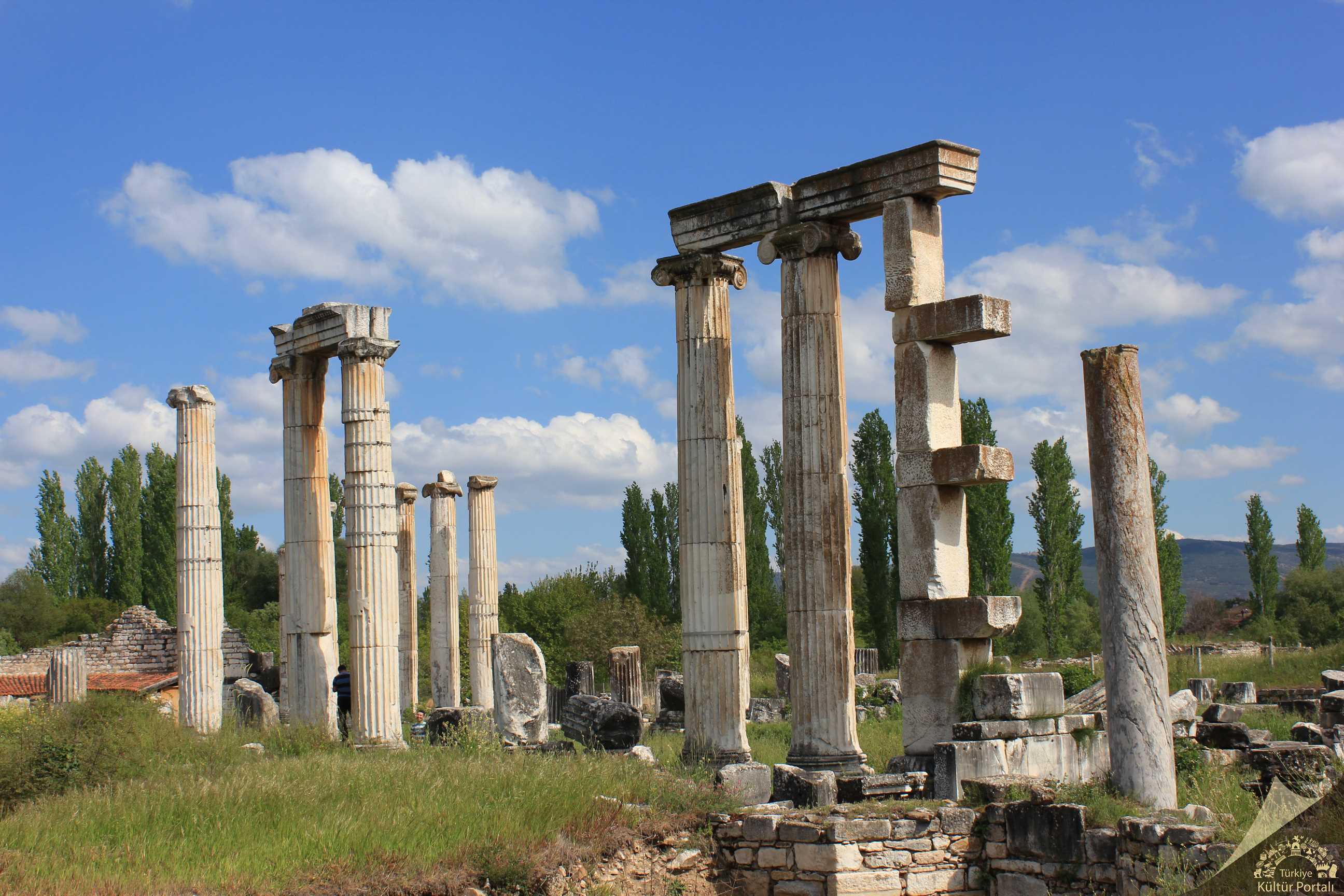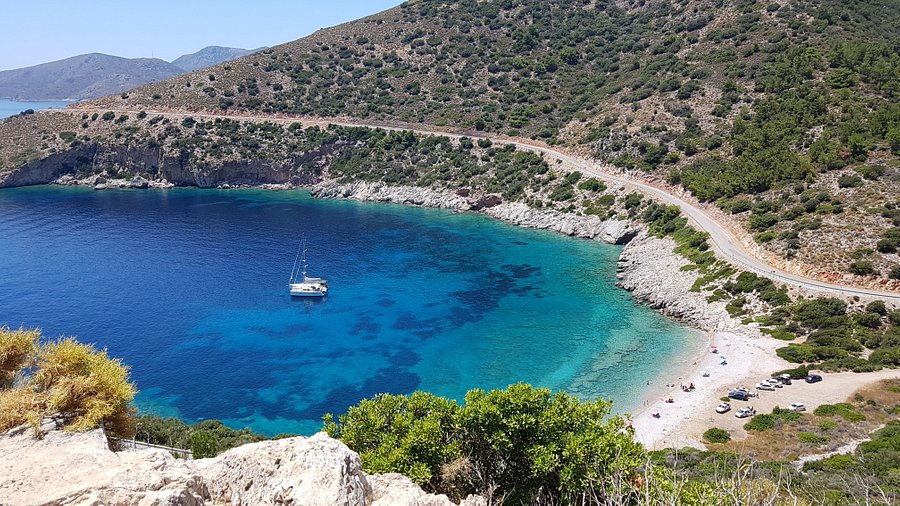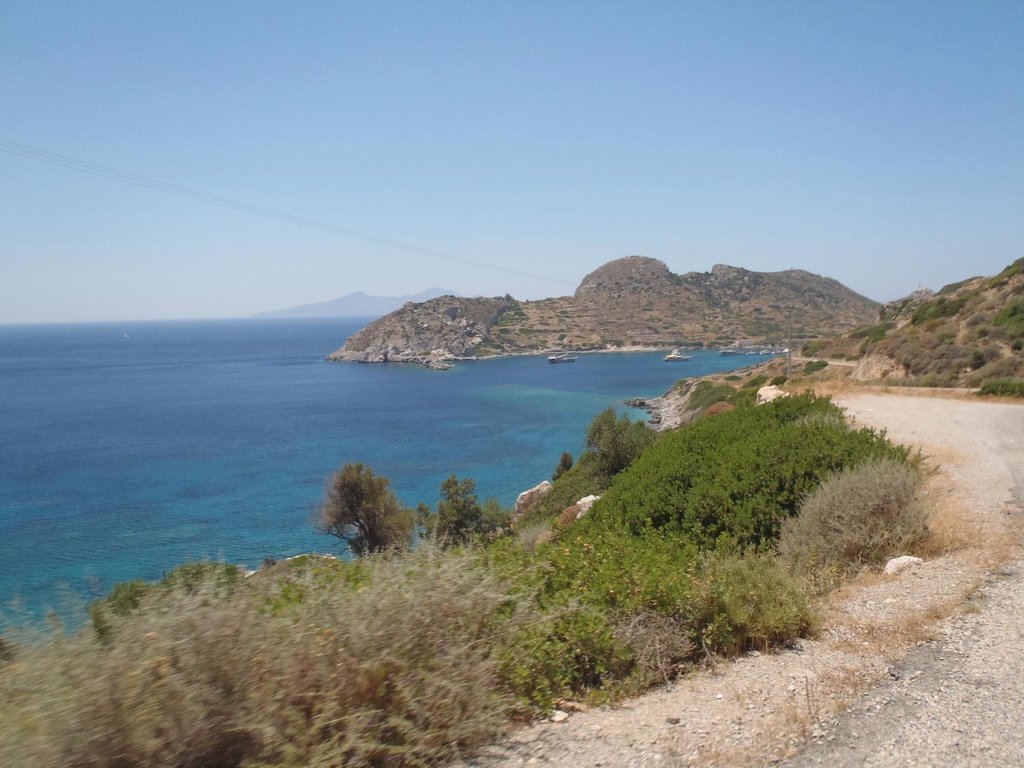Are you tired of the noise of the cities, the endless rush, and the gray concrete piles? Imagine a place where time flows slowly, where you can fill your lungs with the cleanest air in the world at the meeting point of the Aegean and the Mediterranean, and where history whispers from every corner. This is the Datça Peninsula; not just a holiday destination, but a state of mind. If you are looking for stone streets adorned with bougainvillea instead of crowded holiday resorts, ancient cities bearing the traces of thousands of years of civilizations, and pristine bays with the most beautiful shades of turquoise, you are in the right place. This guide has been prepared to offer you the most unforgettable experiences among the things to do in the Datça Peninsula. Let's embark on a journey to the poetic soul, legendary history, and tranquil shores of this magical peninsula.
Get Lost in the Stone-Housed, Bougainvillea-Filled Streets of Old Datça

As you head towards the center of Datça, a modest sign invites you into a completely different world: Old Datça. This is not a place where history is a lifeless object displayed in a museum, but a living fairytale where it breathes in every stone, every door, and every bougainvillea. As you walk through its narrow cobblestone streets, you are accompanied by houses that reflect the finest examples of master stonework, restored faithfully to their original form. The pink bougainvilleas and geraniums hanging from the wooden bay windows of these houses create a riot of color, blending with the blue of the sky.
The magic of Old Datça today is not just a result of efforts to preserve the past; it is also the product of a conscious aesthetic understanding and a cultural spirit. This place, once a village left to decay, has been reborn with the touch of art and history enthusiasts. The decision of the famous poet Can Yücel to spend the last years of his life here particularly changed the village's fate. The calm and peaceful atmosphere he sought eventually attracted other artists, writers, and aesthetically-minded travelers. This cultural influx also shaped the restoration process in the village. The houses were not just repaired but transformed into tasteful boutique hotels, art galleries, craft shops, and charming cafes. So, as you wander the streets of Old Datça, you are actually walking through an experience carefully designed to blend the authentic texture of the past with a modern artistic soul.
At the heart of this poetic atmosphere undoubtedly lies the legacy of Can Yücel. You can walk down the street named after him and pass by the stone house where he lived, known as Can Evi (Can's House). Although the house is generally closed to visitors (it only opens on special commemoration days), even feeling the memories and poems accumulated behind its walls is an experience in itself. You can crown your visit with a break at Orhan's Coffee House (Karya Tea Garden), a place the poet was said to frequent and chat with his friends. Here, while sipping on Datça's special almond coffee or the famous almond soda, you will feel like a part of this unique village where time stands still. This authentic atmosphere places Datça in a special category among the other hidden gems of the Aegean.
Visit the Temple of Aphrodite in the Ancient City of Knidos

When you leave the calm and bohemian spirit of Old Datça and embark on a winding journey to the westernmost tip of the peninsula, to where the world seems to end, you are greeted by one of history's most magnificent scenes: the Ancient City of Knidos. This is a port city that hosted civilization for thousands of years at Tekir Cape, where the Aegean and the Mediterranean enthusiastically embrace. As one of the most important centers of science, art, and architecture of the ancient world, Knidos owed its wealth to the trade of wine and olive oil. The city was built according to the grid plan of Hippodamus, the most modern urban planning concept of the era, and it dominated the seas with its two magnificent harbors, one for military and the other for commercial use.
However, what made Knidos immortal in the pages of history was not just its strategic or economic power. Knidos was one of the biggest brands of the ancient world, and at the heart of this brand lay a bold work of art: the Nude Aphrodite Statue. According to legend, in the 4th century BC, the most famous sculptor of the time, Praxiteles, made two Aphrodite statues for the island of Kos, one clothed and the other nude. The people of Kos, with a conservative attitude, chose the clothed one. This was the moment that changed the fate of Knidos. The people of Knidos, with a boldness unseen until then, purchased the first full-sized nude goddess statue in history and placed it in a temple on the most beautiful hill of their city, overlooking both harbors. This decision instantly turned Knidos into the most popular tourist destination of the ancient world. People flocked to Knidos from all over the world just to see this statue, to witness the divine beauty of the goddess. The city gained such fame and identity through this cultural icon that even when they faced economic hardship in later years, they refused the fortune offered by the king of Bithynia to buy the statue; because Aphrodite had become their soul. Although the statue is lost today, the circular foundations of the temple and the base of the statue are still there. When you stand in front of that base, you can feel to your core how the power of art and beauty transformed a city thousands of years ago.
Don't limit your journey in Knidos to just the Temple of Aphrodite. Explore the other structures scattered across the city's slopes like a theater. Its two theaters, one with a capacity of 5,000 and the other 20,000, the ancient sundial that showed the seasons and time, the Sanctuary of Demeter, and the Temple of Apollo are all testaments to how advanced this civilization was. Especially if you are here around sunset, do not leave without watching the golden rays of the sun paint the ancient stones and the magical view it creates over the sea. Knidos, like other ancient cities that reflect the rich history of Anatolia, is proof of how magnificent the past can be.
Swim in the Tranquil Beaches of Palamutbükü or Ovabükü

To understand the soul of Datça, you must explore its büks, its famous coves. After the magic of history and stone, it's time to surrender yourself to the cool, clear waters of the Aegean. Lined up on the southern coast of the peninsula and known as the three beauties of Datça, Hayıtbükü, Ovabükü, and Palamutbükü are corners of paradise, each with a different character. In this section, we will focus on the two most popular options, Palamutbükü and Ovabükü, to help you find which bük best suits your holiday spirit.
Palamutbükü is the most well-known, liveliest, and most developed of the trio. Its 2-kilometer-long coastline, stretching under the shade of almond and olive trees, offers a spacious area for you to enjoy all day long. The charming fish restaurants, modern cafes, boutique hotels, and pensions lined along the coast give Palamutbükü an energetic and social atmosphere. Its sea is famous for being pebbly and deepening quickly, which makes the water's clarity breathtaking. If you want plenty of dining options on your holiday, to take a pleasant walk along the beach in the evenings, and to be among people, the vibrant rhythm of Palamutbükü is perfect for you.
If what you're looking for is to get away from the crowds, be one with nature, and find absolute tranquility, then you should head to the neighboring cove, Ovabükü. As its name suggests (ova means plain), Ovabükü has a wider, more spacious, and untouched atmosphere. Here, the liveliness of Palamutbükü is replaced by the sounds of birds and the soothing melody of the waves. Its beach has small pebbles, and the sea is shallower and usually as calm as a sheet, making it an ideal choice, especially for families with children. Surrounded by lush green olive and almond trees, this cove promises a more rustic, natural, and calm holiday experience. Life flows slower here; there is no room for haste.
So, which cove is for you? The answer to this question lies in what you expect from a holiday. You can look at the table below to make your choice easier. This is not a guide to find the answer to which is better? but to which is better for me?. The beauty of Datça lies in this; it can offer every traveler a corner that suits their soul.
| Feature | Palamutbükü | Ovabükü |
|---|---|---|
| Atmosphere | Lively, social, and popular | Calm, peaceful, and intertwined with nature |
| Beach Structure | Long, pebbly shore | Wide, small-pebbled shore |
| Sea | Clear and clean | Clear, shallow, and usually calm |
| Facilities | Numerous restaurants, cafes, and pensions | More limited, rustic establishments |
| Ideal For? | Those who love to socialize, couples, groups of friends | Families with children, those seeking tranquility, nature lovers |
| Crowd Level | Can be more active and crowded in high season | Generally more spacious and calm |
Conclusion: Datça is Not Just a Place, It's an Escape
The Datça Peninsula offers you much more than a standard holiday. It is a multi-layered experience where you can touch the past in the stone streets of Old Datça, witness the pinnacle of civilization in Knidos, and rest your soul in the turquoise waters of Palamutbükü. But the magic of Datça is not limited to these.
While you're here, don't forget to add these to your exploration list:
Kargı Bay: A surprisingly calm and sheltered bay very close to the center. It is known for its sea that is as calm as a sheet, especially in the morning hours, and its peaceful atmosphere.
Kızlan Village: This village, which gets the most of Datça's famous wind, is famous for its historic windmills. It is also an authentic stop where you can find local products like olive oil and almonds.
Carian Trail: If you love nature walks, you can discover the untouched nature and breathtaking views of the peninsula by taking a short walk on a section of the Carian Trail, Turkey's longest ancient walking route, that passes through Datça.
Boat Tour: The best way to see Datça's hidden paradises that are inaccessible by land (like Aquarium Bay, Domuz Çukuru) is definitely to join a daily boat tour.
For more academic and official information about the rich history of Knidos, you can review the Republic of Turkey Ministry of Culture and Tourism's resource page on the Ancient City of Knidoshere.
Frequently Asked Questions (FAQ)
1. When is the best time to visit Datça? The sea season in Datça is quite long; you can swim from April to November. However, the most ideal period is May, June, and September, when the weather is not overwhelming and the crowds are smaller. If you are looking for a different experience, you can also choose the enchanting time in February when the almond trees blossom, blanketing the entire peninsula in white.
2. How to get to the Ancient City of Knidos and what are the entrance details? You can reach Knidos by a car journey of about 35 kilometers from the center of Datça. The last part of the road can be winding and unpaved. Alternatively, you can use the minibuses departing from the center or join the boat tours organized in the summer months. The ancient city is an archaeological site managed by the Ministry of Culture and Tourism. Entrance fees and visiting hours may vary depending on the season. It is recommended to check the official website of the Museum Card for the most up-to-date information before you go. Entrance is free if you have a Museum Card.
3. Where is the best area to stay in Datça? This completely depends on your holiday expectations. If you want to be close to restaurants, cafes, and a lively evening, Datça Center is ideal. If you are looking for a romantic, historical, and calm atmosphere, you can prefer the boutique hotels in
Old Datça. If the focus of your holiday is the sea and the beach, you can start your day by the sea by staying in pensions and apart-hotels in coves like Palamutbükü or Ovabükü.


 English
English Türkçe
Türkçe